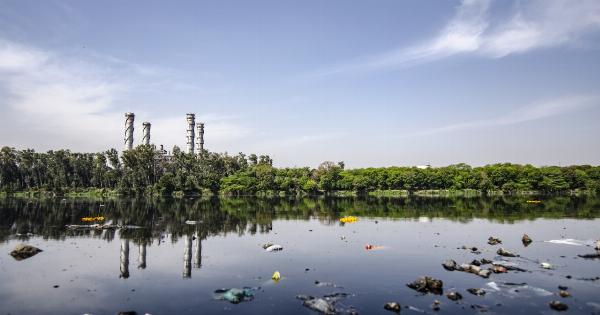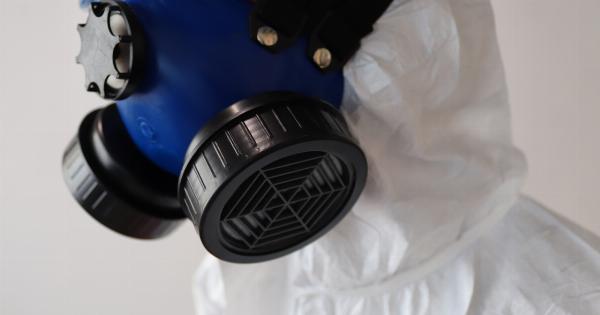Air pollution is a growing concern worldwide, affecting the health of millions of people. It is particularly harmful to individuals with pre-existing health conditions, such as diabetes.
Diabetic athletes, who already face unique challenges in managing their condition while participating in intense physical activities, are especially vulnerable to the adverse effects of air pollution. This article explores the impact of air pollution on diabetic athletes and highlights the need to address this issue for the well-being of these individuals.
1. Understanding Air Pollution
Air pollution refers to the presence of harmful substances, known as pollutants, in the air we breathe. These pollutants can be both natural (e.g., pollen, dust) and man-made (e.g., exhaust emissions, industrial emissions).
Common air pollutants include particulate matter (PM), nitrogen dioxide (NO2), sulfur dioxide (SO2), carbon monoxide (CO), and ozone (O3).
2. The Link Between Air Pollution and Diabetes
Studies have shown a strong association between air pollution exposure and the development of diabetes.
Prolonged exposure to air pollutants can increase the risk of developing type 2 diabetes, impair glucose metabolism, and exacerbate the existing condition in individuals with diabetes. The mechanisms through which air pollution contributes to diabetes involve oxidative stress, inflammation, insulin resistance, and impaired pancreatic beta-cell function.
3. Challenges Faced by Diabetic Athletes
Managing diabetes is already a complex task, and athletes with diabetes face additional challenges. They must carefully balance their blood sugar levels, insulin dosing, and energy intake to optimize their athletic performance and prevent complications.
Maintaining stable blood sugar levels is crucial for athletic performance, as both hypoglycemia (low blood sugar) and hyperglycemia (high blood sugar) can have detrimental effects on exercise capacity and recovery.
4. Impact of Air Pollution on Athletic Performance
Athletes depend on optimal lung function and cardiovascular performance for their athletic endeavors. However, air pollution can impair these vital functions.
Inhalation of pollutants, especially fine particulate matter (PM2.5), can lead to respiratory symptoms, decreased lung function, increased airway resistance, and systemic inflammation. These effects can negatively impact the performance of diabetic athletes, making it more challenging for them to achieve their full potential.
5. Exacerbation of Diabetes Symptoms
Air pollution exposure has been found to worsen the symptoms of diabetes, both acutely and chronically.
Diabetic athletes exposed to high levels of air pollutants may experience more difficulty in managing their blood sugar levels, leading to fluctuations and inadequate control. This can affect their overall well-being and compromise their athletic performance.
6. Strategies to Mitigate the Impact of Air Pollution
While it may be challenging to completely eliminate air pollution, several strategies can help mitigate its impact on diabetic athletes:.
- Avoiding outdoor exercise during peak pollution hours
- Choosing cleaner exercise environments, such as indoor facilities or parks away from heavily trafficked areas
- Wearing proper respiratory protection, such as masks designed to filter out pollutants
- Monitoring air quality regularly and adjusting exercise routines accordingly
- Optimizing diabetes management through close monitoring of blood sugar levels and appropriate medication adjustment
- Advocating for stricter air pollution regulations and implementing measures to improve air quality
7. The Role of Policy and Awareness
Efforts to reduce air pollution must be supported by effective policies and increased public awareness. Governments should enforce stricter regulations on industrial emissions, vehicle exhaust, and other significant sources of pollution.
Promoting the use of cleaner energy sources and encouraging sustainable transportation options can also contribute to improving air quality. Additionally, raising awareness about the impact of air pollution on diabetic athletes can help individuals take necessary precautions and advocate for change.
8. Conclusion
Air pollution poses a significant threat to the health and well-being of diabetic athletes.
The combined challenges of managing diabetes and engaging in intense physical activities become even more complex when exacerbated by the detrimental effects of air pollution. Recognizing the impact of air pollution on this vulnerable population is crucial for developing strategies to mitigate its effects.
By taking proactive measures to improve air quality and providing support to diabetic athletes, we can ensure better health outcomes and enhance their athletic performance.





























